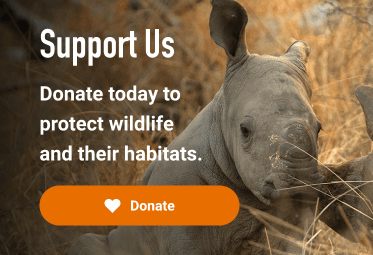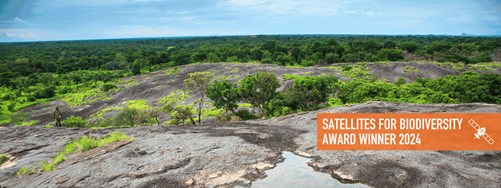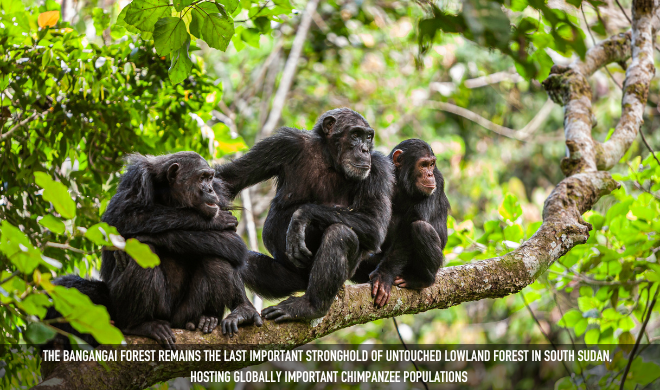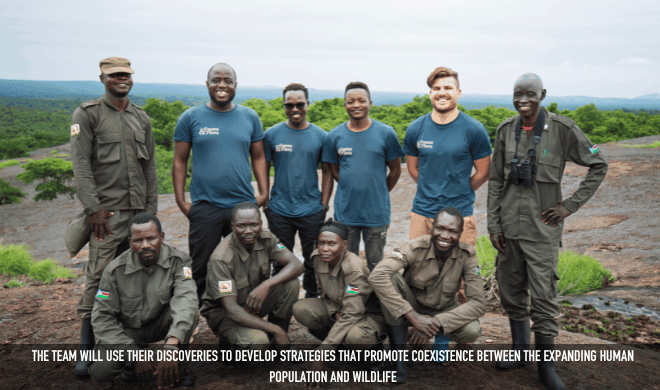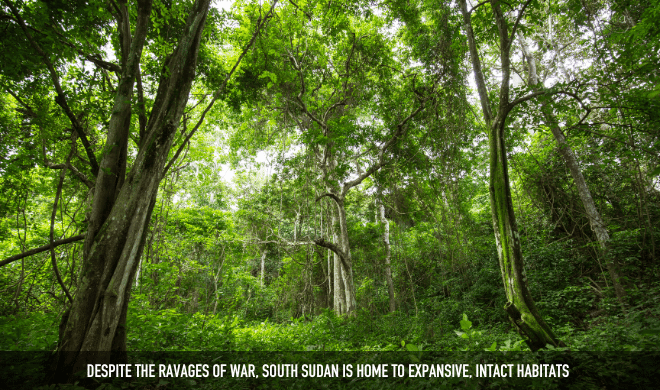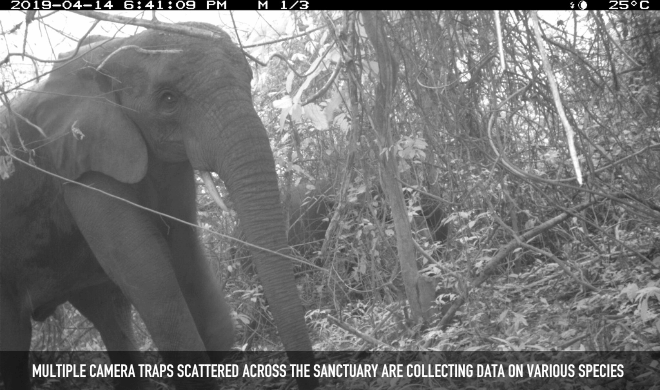Community collaboration: Protecting wildlife in South Sudan's untouched terrain
Partners: Fauna & Flora and Airbus Foundation
Key Species: chimpanzee, African forest elephant, giant ground pangolins, white-bellied pangolins, spotted hyena, leopard, African golden cat, Bongo
2024 Award Winner
Nestled within the wild expanse of South Sudan's untouched terrain are two exceptional conservation treasures: Bangangai Game Reserve and Bire Kpatuos. Despite their modest size, these protected areas provide vital habitats for numerous endangered species within their primary forests and vast grasslands. The Bangangai Forest stands as the final significant bastion of unspoiled lowland forest in South Sudan, harbouring globally significant populations of chimpanzees, giant ground pangolins, white-bellied pangolins, African elephants and leopards.
Navigating a range of challenges, from political instability to logistical hurdles, Fauna & Flora has been instrumental in safeguarding these areas for over a decade against the looming threats of exploitation, particularly from poaching activities. Despite the vibrant array of life here, it faces persistent challenges posed by poverty-driven poaching and the encroachment of migratory pastoral groups.
In response, efforts are underway to collaborate with surrounding communities to establish a community conservation area (CCA) as a protective buffer zone for the reserves, providing a physical barrier between the core reserves and external threats.
Satellite eyes on the land to map biodiversity landscapes
As part of this ambition, Fauna & Flora is using 50 cm imagery donated by the Airbus Foundation, and funding and technical support from the Connected Conservation Foundation, to conduct a comprehensive landscape-level assessment to map land cover, analyse potential deforestation drivers and evaluate the connectivity of these precious ecosystems.
Through the lens of satellite imagery, Fauna & Flora's analytics team will unveil intricate details of the habitats and corridors most important to biodiversity living here. Identifying core forest patches and critical connectivity pathways that underpin the survival of countless species and support the CCA.
Translating data into action
Rooted in collaboration with local communities, findings will inform actionable strategies to help the growing human population co-exist with the wildlife, such as supporting communities to adopt natural resource management practices that improve their livelihoods while supporting conservation goals.
Navigating the unknown
Drawing upon decades of experience in conflict-affected regions, the organisation has built up a wealth of trust and resilience in the face of adversity. Through partnership with the Ministry of Wildlife Conservation and Tourism and the communities of South Sudan, Fauna & Flora endeavours to turn these protected areas into beacons of environmental stewardship and socioeconomic empowerment.
Image credits: Header, group photo, forest & camera trap footage (C) Fauna & Flora. Chimpanzees (C) Gary Sand Wales


